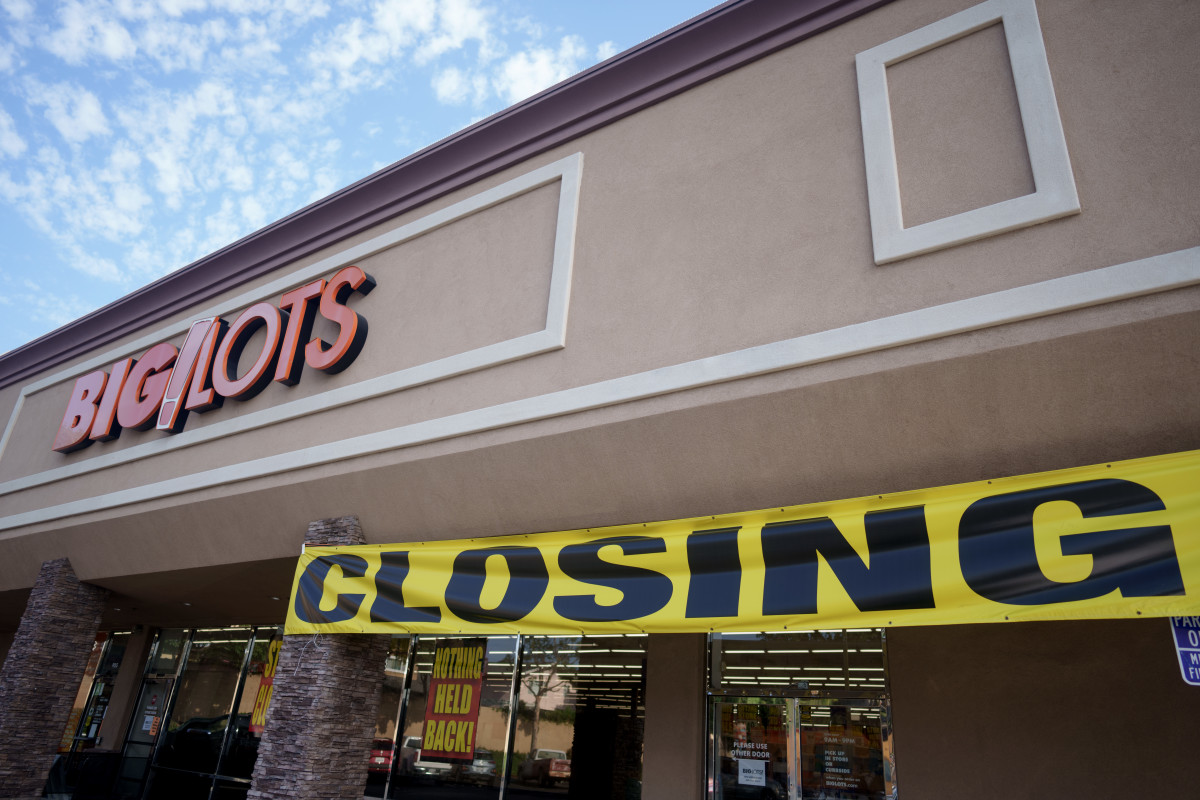
Hardly a day goes by when you don't read or hear about a store closing. Or maybe even an entire retail chain.
It's been going on for years, but the picture today is actually quite complicated.
Don't miss the move: Subscribe to TheStreet's free daily newsletter
This year, 13 major companies have said they will shut down more than 2,000 stores around the country. That's on top of 4,548 in 2023, 3,818 in 2022, 5,228 in 2021 and nearly 9,700 in 2020.
And there are more beyond that: small companies with just a few stores or maybe just a neighborhood mom-and-pop operation.
Related: Target slashes prices ahead of holiday shopping surge
The forces driving these closures fit into one or more buckets, including:
- The Covid-19 pandemic. It's the public-health-infused socioeconomic crisis that keeps on giving. Retailers were body-slammed in 2020 into 2021 by the Covid-generated slump. But the pandemic is also responsible for many continuing closures.
- Inflation. Yes, inflation has been a problem. Freight rates jumped as Covid-19 eased and life resumed. Rising fuel and energy costs cut into profit margins. Labor costs, in many cases, have risen faster than sales. As important, many customers have been telling economic researchers (and politicians) they must cut back on personal spending. Retailers, hit by higher financing costs on inventories, are forced to cut prices to keep shoppers, but that guts profit margins.

- Changing shopping patterns. Online shopping now accounts for at least 15% of all U.S. retail sales, according to CapitalOne data, and may double by 2030. Online now includes far more than Amazon.com (AMZN) . Walmart (WMT) , Target (TGT) , Costco (COST) and others are investing in their online capacities. Shopping malls have been struggling for years in part because shoppers have been moving or changing buying habits. Big chains would rather run stores near their customers.
- Intense competition. If you own a small bookstore, your problem is the Amazon effect: A shopper comes into your shop, sees a book of interest and orders it online. That, of course, is just a piece of the competitive challenge. High-end retailers are struggling to find goods that high-end customers want. A bigger problem: Big-box retailers have been revamping stores and cutting prices (thanks to better terms from vendors). That undercuts the profit margins of smaller operators.
- Too many stores. An uncomfortable truth is that by 2018 U.S. retailers occupied 23.5 square feet per person, the most in the world. Canada and Australia were second and third at 16.8 square feet and 11.2 square feet, respectively. Then, the pandemic erupted.
Related: Analysts revise Starbucks stock price target after preliminary results
Don't underestimate the impact of the housing slump
When the Federal Reserve started its war against inflation in 2022, mortgage rates jumped from around 3% to nearly 8% in late 2023.
The result was to depress existing-home sales by as much as 42% since January 2021, according to data from the National Association of Realtors.
That hit buyers and sellers — and related companies — hard because a home purchase almost always mean the buyers head out to buy paint, wood, appliances and furniture.
More Retail and Bankruptcy:
- Distressed retailer closes more stores in Chapter 11 bankruptcy
- Popular restaurant chain operator files for Chapter 11 bankruptcy
- Iconic fast-food chain operator files Chapter 11 bankruptcy
Texas furniture-and-appliance dealer Conn's HomePlus shut down in August. Big Lots, (BIG) which filed for Chapter 11 bankruptcy protection in September, is closing at least 340 locations.
Meanwhile, Home Depot (HD) expects same-store sales to drop 3% to 4% in 2024. Even Ikea, the global furnishings giant, reported sales fell 5.3% in the 12 months ended in August.
Related: Major airline takes drastic steps to avoid bankruptcy
Can the situation for retailers turn around?
In time. The worst year for store closures was 2020 when 9,700 stores were shuttered, compared with 3,704 opened. Net losses totaled 5,994.
Since then, nearly 5,000 stores opened each year between 2021 and 2023, and closures have dropped substantially.
More stores opened than closed in 2022 and 2023, according to data from Coresight Research, a real-estate-analytics firm. So far this year 4,426 stores have opened, while 4,548 have closed. That number, however, includes all the Big Lots closures.
Tenants are looking for good properties, Brandon Svec, national director of U.S. retail analytics for CoStar Group, has insisted.
"There are still a substantial amount of tenants from a broad range of sectors looking for space," he said in an August interview. "And the longer-term imbalance between the space needed in retail and the space that we have, I don't think has shifted."
Related: Veteran fund manager sees world of pain coming for stocks







